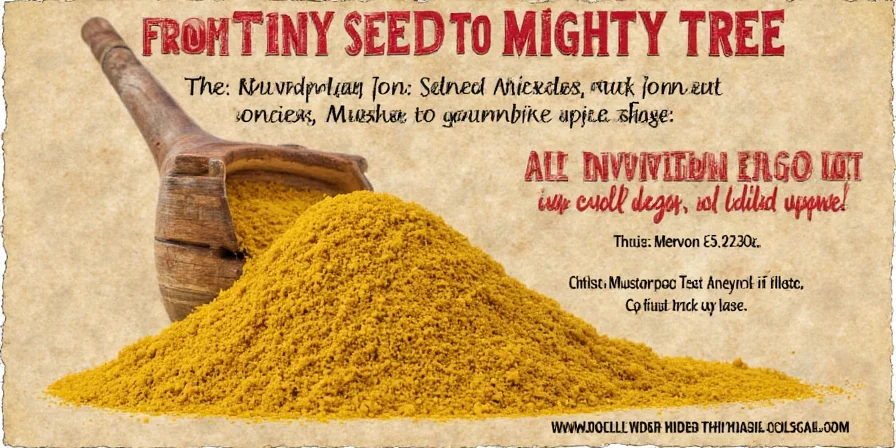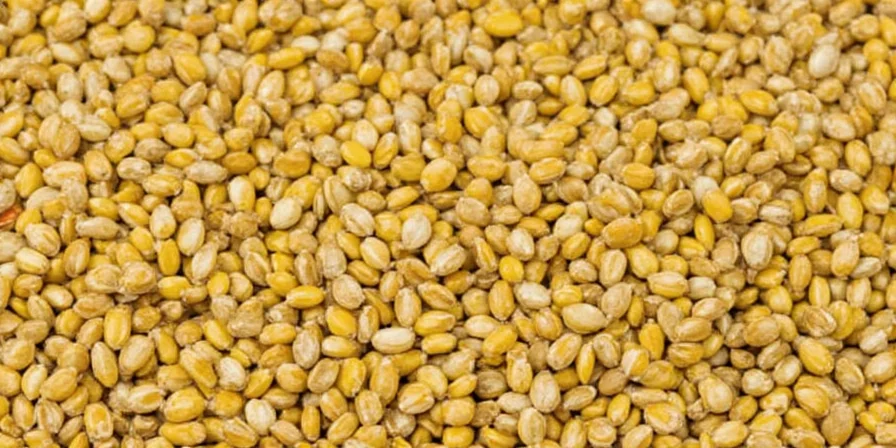Mustard seeds are versatile culinary ingredients with 10 practical applications beyond basic mustard sauce. Home cooks can immediately use them for tempering dishes, pickling vegetables, enhancing marinades, and creating flavorful oils. The most valuable uses include adding them to lentil dishes through 'tadka' technique, making homemade mustard with specific seed-to-liquid ratios, and incorporating them into salad dressings for texture and heat.



| Mustard Seed Type | Best Culinary Applications | Recommended Quantity per Dish | Key Flavor Profile |
|---|---|---|---|
| Yellow Mustard Seeds | Classic American mustard, pickling brines, mild dressings | 1-2 tsp for quart of pickles | Mild tanginess, slightly bitter |
| Brown Mustard Seeds | Dijon mustard, Indian curries, meat marinades | 1.5 tsp for standard curry recipe | Spicy, complex warmth |
| Black Mustard Seeds | Traditional pickles, South Indian tadkas | 1 tsp for 4 servings of dal | Intense, fiery sharpness |
Immediate Practical Uses of Mustard Seeds
For home cooks seeking to enhance everyday cooking, these are the most valuable mustard seed applications with precise implementation details:
- Perfect Tempering Technique: Heat 1 tbsp oil until shimmering, add 1 tsp mustard seeds and 1 dried red chili. Wait for seeds to pop (15-20 seconds), then immediately add to cooked lentils or vegetables for authentic Indian flavor.
- Homemade Mustard Formula: Combine 3 tbsp brown mustard seeds (soaked 8 hours), 1/4 cup apple cider vinegar, 1 tbsp honey, and 1/2 tsp turmeric. Blend until smooth, refrigerate 24 hours before use for optimal flavor development.
- Pickling Essential: Add 1.5 tsp yellow mustard seeds per jar when preparing refrigerator pickles for authentic tang and texture.
- Marinade Booster: Crush 1 tsp mustard seeds and mix with 2 tbsp yogurt, 1 tsp ginger paste, and 1/2 tsp garlic paste for chicken or tofu marinades (use within 2 hours).
- Salad Texture Secret: Dry toast 1 tsp mustard seeds in pan over medium heat for 90 seconds until they begin popping, then sprinkle over finished salads.
Professional Usage Guidelines
Understanding seed properties ensures optimal results in cooking:
- Timing is Critical: Mustard seeds should be added to hot oil when it reaches 350°F (175°C) for proper popping without burning.
- Grinding Technique: For smooth sauces, soak seeds in liquid for 8 hours before grinding. For textured applications, use dry seeds.
- Storage Protocol: Whole seeds maintain peak potency for 3-4 years when stored in airtight containers away from light. Ground seeds lose 50% potency within 3 months.
- Substitution Ratios: Replace 1 tsp mustard powder with 1.5 tsp whole seeds. For ready-to-use applications, mustard powder works faster but whole seeds provide more complex flavor development.
Common Application Mistakes to Avoid
| Mistake | Correct Technique | Impact on Dish |
|---|---|---|
| Adding seeds to cold oil | Always add to hot oil (350°F/175°C) | Seeds won't pop properly, resulting in bitter taste |
| Over-toasting seeds | Dry toast for 90-120 seconds max | Burnt flavor that ruins entire dish |
| Using expired seeds | Check freshness (should pop within 20 seconds) | Weak flavor that doesn't penetrate dish |
Practical Implementation Scenarios
For specific cooking situations, use these proven approaches:
- Weeknight Dinner Solution: Create instant flavor boost by tempering 1 tsp mustard seeds in 1 tbsp oil and pouring over store-bought dal or lentil soup (ready in 3 minutes).
- Meal Prep Application: Make mustard seed-infused oil (1/4 cup oil + 2 tbsp seeds heated until seeds pop, then strained) for versatile use in dressings and cooking throughout the week.
- Salt Reduction Technique: Replace 25% of salt in recipes with properly prepared mustard seeds to maintain flavor complexity while reducing sodium.
Storage and Freshness Testing
Maximize shelf life and verify seed potency with these methods:
- Store whole seeds in dark glass containers with tight seals
- Test freshness by heating 1/2 tsp in dry pan - fresh seeds pop within 20 seconds
- Discard seeds that show discoloration or fail to pop after 30 seconds of heating
- Refrigerate opened packages to extend shelf life by 6-12 months
Frequently Asked Implementation Questions
What's the exact timing for proper mustard seed tempering?
Heat oil to 350°F (175°C), add seeds, and wait precisely 15-20 seconds until 80% have popped. Immediately remove from heat to prevent burning.
How do I fix mustard seeds that have burned during tempering?
Unfortunately, burned seeds cannot be salvaged. Start over with fresh oil and seeds. To prevent this, use medium heat and watch seeds closely after they begin popping.
Can I use mustard seeds as a thickening agent?
Yes, when ground and mixed with liquid, mustard seeds create natural emulsification. Use 1 tbsp ground seeds per cup of sauce for optimal thickening without altering flavor significantly.
What's the best way to incorporate mustard seeds into baking?
For breads and crackers, use 1-2 tsp whole seeds directly in dough. For sweeter applications, toast seeds first with 1/2 tsp sugar to mellow their sharpness before adding to batter.










 浙公网安备
33010002000092号
浙公网安备
33010002000092号 浙B2-20120091-4
浙B2-20120091-4